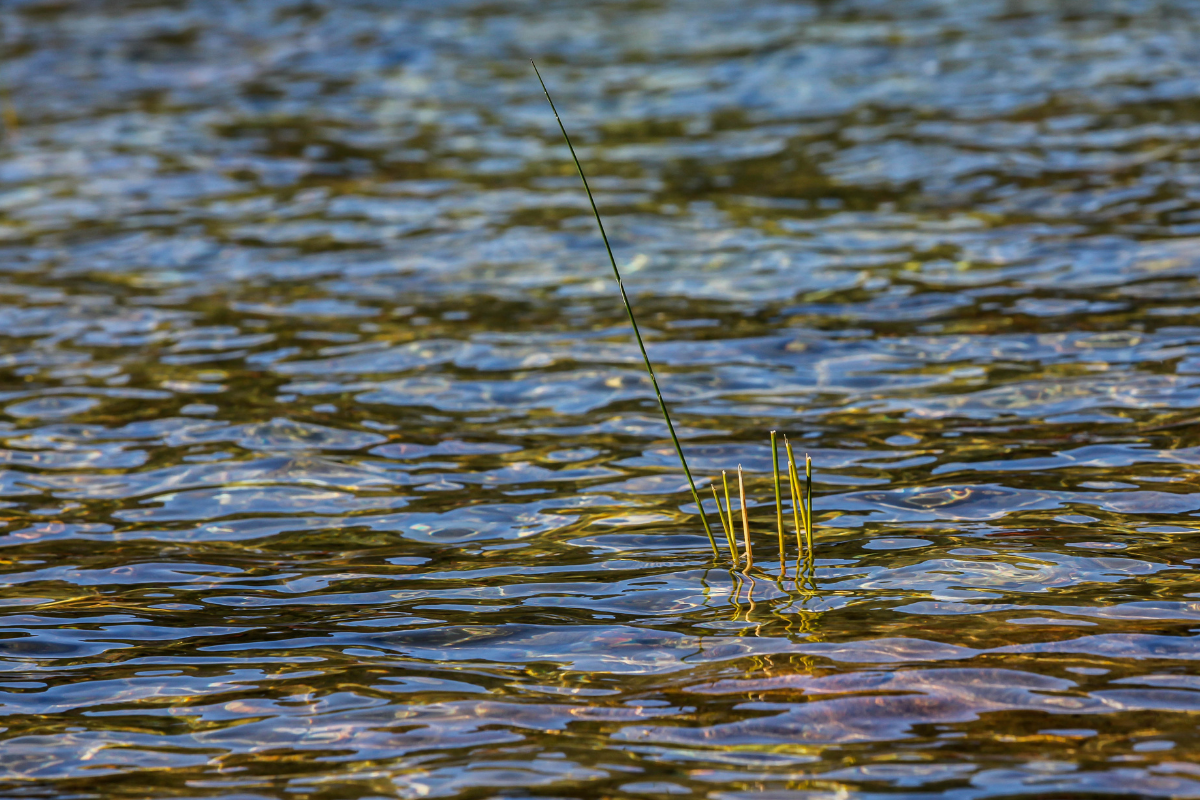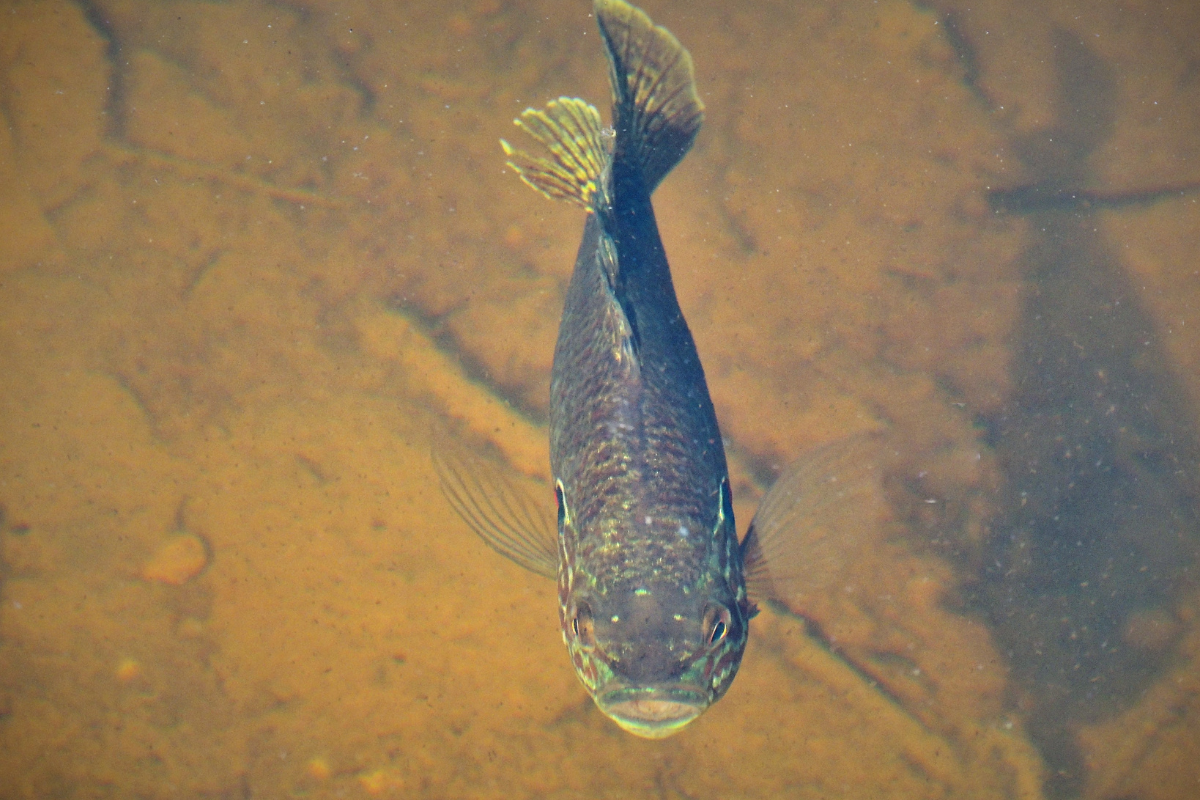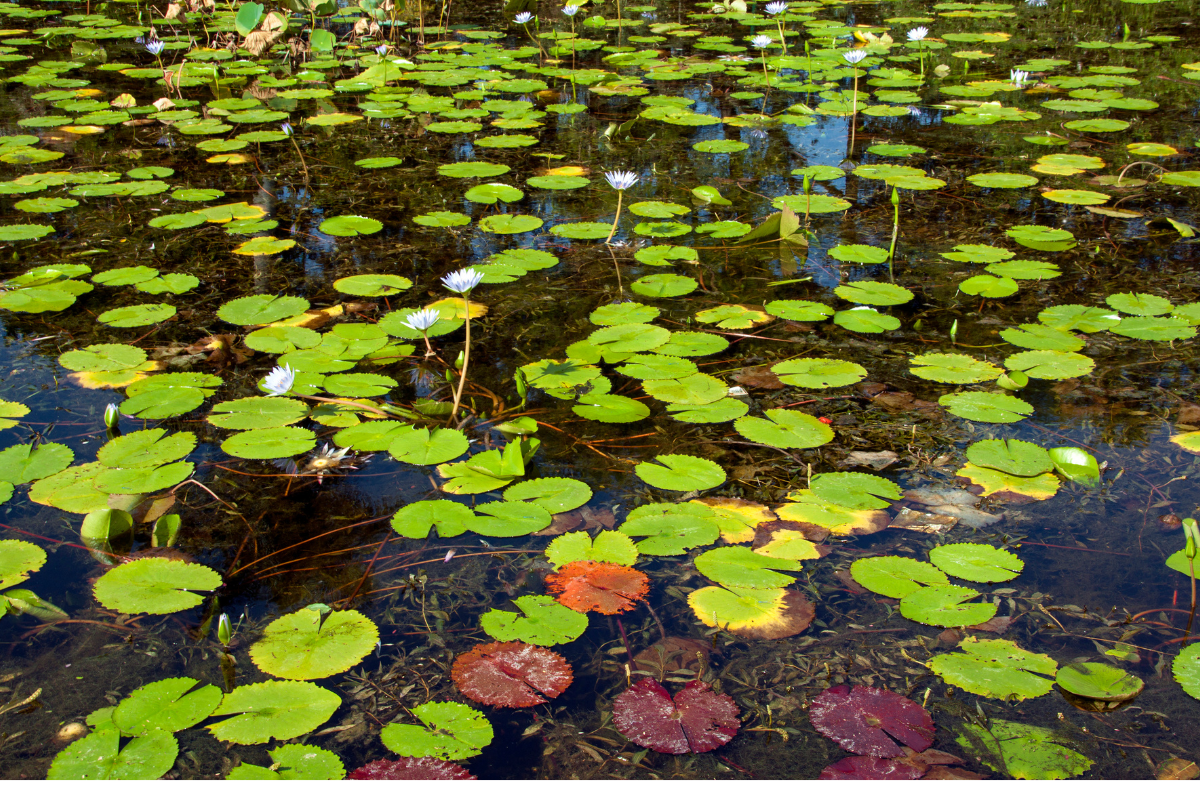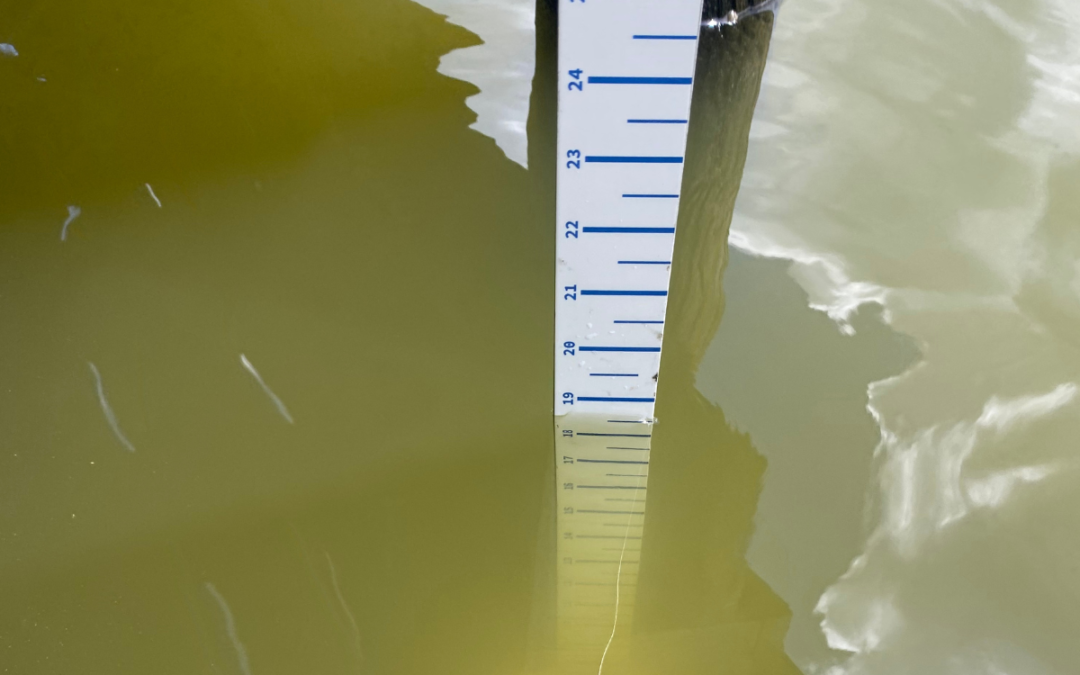When envisioning an ideal fishing pond, many people imagine clear, pristine waters teeming with healthy fish. However, overly clear water in a fishing pond can pose significant problems. While crystal-clear water might look appealing, it can create an environment that’s less than ideal for fish and other aquatic life. Understanding these issues is crucial for pond owners and managers who aim to maintain a balanced, thriving aquatic ecosystem. Below we’ll explain some of the issues that high water clarity can cause in ponds and small lakes.

Lack of Algae and Phytoplankton
One of the primary issues with high water clarity is the lack of algae and phytoplankton. These microorganisms are essential components of the aquatic food web. Algae and phytoplankton serve as the base of the food chain, providing nourishment for zooplankton, small fish, and other aquatic organisms. In turn, these smaller creatures are prey for larger fish.
In ponds with high water clarity, the absence of algae and phytoplankton can lead to a food shortage for fish. This scarcity can stunt the growth of fish populations and reduce the overall biodiversity of the pond. Additionally, algae play a vital role in oxygenating the water through photosynthesis. Without sufficient algae, the oxygen levels in the pond can drop, stressing fish and potentially leading to fish kills.
Increased Predation
High water clarity can also increase predation pressure on fish. In a pond with murky or turbid water, fish can easily find hiding spots among aquatic plants and other underwater structures. This natural camouflage helps protect them from predators, including birds, larger fish, and even humans.
However, in overly clear water, fish become more visible and vulnerable to predators. Birds of prey, such as herons and kingfishers, can easily spot and catch fish in clear water. Similarly, larger predatory fish can more effectively hunt smaller fish. This increased predation can imbalance the pond’s ecosystem, reducing fish populations and disrupting the natural food web.

Temperature Fluctuations
Another issue with high water clarity is its tendency to experience greater temperature fluctuations. Water transparency affects how sunlight penetrates the water column. In clear water, sunlight can reach deeper into the pond, causing the water to warm up more quickly during the day. Conversely, at night, the water can cool down rapidly.
These temperature fluctuations can stress fish and other aquatic organisms. Fish are ectothermic, meaning their body temperature is regulated by the surrounding water. Rapid changes in water temperature can impact their metabolism, growth rates, and reproductive success. Moreover, certain fish species are sensitive to temperature changes and may struggle to survive in an environment with significant temperature swings.
Nutrient Imbalance
High water clarity can indicate an imbalance of nutrients in the pond. In a balanced ecosystem, nutrients like nitrogen and phosphorus support the growth of algae and aquatic plants. However, if these nutrients are depleted or absent, the water remains clear, but the pond’s overall health may suffer.
Nutrient imbalances can occur due to various factors, such as poor soil quality, lack of organic matter, or inadequate fertilization. Without sufficient nutrients, beneficial aquatic plants and algae cannot thrive, leading to a decline in the pond’s biological productivity. This situation can be detrimental to fish, as their food sources diminish, and the pond’s carrying capacity decreases.

Excessive Plant Growth
Ironically, while clear water may lack algae, it can promote the excessive growth of submerged aquatic plants. In clear water, sunlight can penetrate deeper, reaching the bottom of the pond and encouraging the growth of rooted aquatic plants. While some plant growth is beneficial, excessive vegetation can create problems.
Overgrown aquatic plants can impede fish movement, making it difficult for them to access different areas of the pond. Dense plant growth can also reduce the water’s oxygen levels, particularly at night when plants consume oxygen through respiration. This oxygen depletion can stress fish and other aquatic organisms, leading to poor health and potential fish kills.
Managing Water Clarity
To address the issues associated with overly clear water, we can take several steps to achieve a more balanced ecosystem. One approach is to introduce beneficial aquatic plants and algae through fertilization. Adding fertilizers can help replenish essential nutrients, promoting the growth of algae and phytoplankton.
Another strategy is to install aeration systems to improve oxygen levels in the water. Aerators can enhance water circulation and prevent the buildup of harmful gases, ensuring a healthier environment for fish. Additionally, introducing structures like rocks, logs, and aquatic plants can provide hiding spots for fish, reducing their vulnerability to predators.
Lastly, monitoring and managing fish populations is essential. Stocking the pond with a diverse range of fish species can help maintain a balanced food web and reduce the impact of predation. Regularly assessing water quality and nutrient levels can also help identify and address potential issues before they become severe.
Our goal is to see water clarity in the 18-28″ range. In ponds where water clarity is 3-4′ deep, we almost always see issues with subsurface vegetation. Reducing the water clarity to the desired 18-28″ will often solve a myriad of problems for pond and lake owners.
Let Up Help with Your Pond!
If you’re in the south GA or north FL region and need help managing the water clarity in your pond, complete this form and we’ll contact you to schedule a time to meet.

